

Mirrorless cameras are all the rage. They combine the advantages of compacts with those of DSLRs. As with DSLRs, the lenses are interchangeable. And as with compacts, the viewfinder is electronic, without mirrors. They’re therefore lighter and more compact. For the same price, they offer similar image quality to that of DSLRs.
We carried out a large survey between 19th and 24th April 2023, amongst 1,212 people who had gone on a long trip. We asked them many questions about the devices they used to take their photos. Learn more about our methodology
19% of long-term travellers took a mirrorless camera.
The most popular mirrorless camera brands amongst RTW travellers are:
We compared the most used full-frame mirrorless camera models by long term travelers. We also included some cameras that are too recent to be included in our survey but are among the best sellers.
|
Sony Alpha 7 Mark IV |
Sony Alpha 7 Mark III |
Nikon Z6 Mark II |
Panasonic Lumix S5 Mark II |
Panasonic Lumix S5 |
Canon EOS R6 Mark II |
Canon EOS R6 |
Canon EOS R8 |
||
|---|---|---|---|---|---|---|---|---|---|

|

|
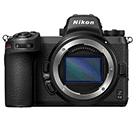
|
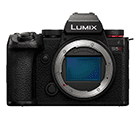
|
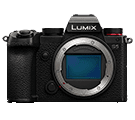
|
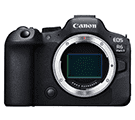
|
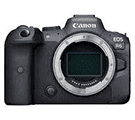
|
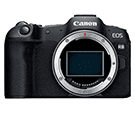
|
||
|
BUY
|
|||||||||
| Price (body only) | $2,300 | $2,100 | $1,850 | $1,800 | $1,800 | $2,500 | $2,000 | $1,500 | Buy | Amazon | Amazon | Amazon | Amazon | Amazon | Amazon | Amazon | Amazon |
|
OUR SURVEY
|
|||||||||
| Number of respondents who bought this series (including older models) | 35 | 35 | 15 | 5 | 5 | 3 | 3 | 1 | |
|
These ratings are based on the evaluation at the time of the camera’s release. For older devices, the score may be slightly inflated due to the technological advancements of competing devices. Average rating from 13 specialised websites (out of 10) See all ratings |
|||||||||
| Release Year | 2021 | 2018 | 2020 | 2023 | 2020 | 2022 | 2020 | 2023 | |
|
SENSOR
|
|||||||||
| Sensor size (mm) | 35.9 x 23.9 mm | 36 x 24 mm | 35.9 x 23.9 mm | 35.6 x 23.8 mm | 35.6 x 23.8 mm | 36 x 24 mm | 36 x 24 mm | 36 x 24 mm | |
| Number of megapixels | 33 Mpx | 24.2 Mpx | 25 Mpx | 24 Mpx | 24 Mpx | 24 Mpx | 20 Mpx | 24 Mpx | |
| Sensitivity : native ISO range | 100 – 51,200 | 100 – 51,200 | 100 – 51,200 | 100 – 51,200 | 100 – 51,200 | 100 – 102,400 | 100 – 102,400 | 100 – 102,400 | |
| Sensitivity : extended ISO range | 50 – 204,800 | 50 – 204,800 | 50 – 204,800 | 50 – 204,800 | 50 – 204,800 | 50 – 204,800 | 50 – 204,800 | 50 – 204,800 | |
|
Autofocus
|
|||||||||
| Contrast detection | |||||||||
| Phase detection | |||||||||
| Number of focus points | 759 | 693 | 273 | 779 | 225 | 1,053 | 1,053 | 1,053 | |
|
Shutter speed
|
|||||||||
| Mechanical shutter speed | 1/8,000 – 30 s | 1/8,000 – 30 s | 1/8,000 – 900 s | 1/8,000 – 60 s | 1/8,000 – 60 s | 1/8,000 – 30 s | 1/8,000 – 30 s | 1/4,000 – 30 s | |
| Maximum mechanical burst speed at full resolution | 10 fps | 10 fps | 14 fps | 9 fps | 7 fps | 12 fps | 12 fps | 6 fps | |
|
Video
|
|||||||||
| Video size | 4K | 4K | 4K | 6K | 4K | 4K | 4K | 4K | |
| Video: maximum size (pixels) and frame rate (fps) |
3,840×2,160 / 60 fps 1,920×1,080 / 120 fps |
3,840×2,160 / 30 fps 1,920×1,080 / 120 fps |
3,840×2,160 / 30 fps 1,920×1,080 / 120 fps |
5,952×3,968 / 30 fps 4,096×2,160 / 30 fps 1,920×1,080 / 120 fps |
3,840×2,160 / 60 fps 1,920×1,080 / 60 fps |
3,840×2,160 / 60 fps 1,920×1,080 / 120 fps |
3,840×2,160 / 60 fps 1,920×1,080 / 120 fps |
3,840×2,160 / 60 fps 1,920×1,080 / 180 fps |
|
|
Viewfinder
|
|||||||||
| Type | Electronic | Electronic | Electronic | Electronic | Electronic | Electronic | Electronic | Electronic | |
| Number of dots | 3,686,400 | 2,359,000 | 3,690,000 | 3,690,000 | 2,360,000 | 3,690,000 | 3,690,000 | 2,360,000 | |
|
Screen
|
|||||||||
| Size | 7.6 cm | 7.6 cm | 8.1 cm | 7.6 cm | 7.6 cm | 7.6 cm | 7.6 cm | 7.6 cm | |
| Number of dots | 1,036,800 | 921,600 | 2,100,000 | 1,840,000 | 1,840,000 | 1,620,000 | 1,620,000 | 1,620,000 | |
| Touch screen | |||||||||
| Screen type | Fully articulated | Tilting | Tilting | Fully articulated | Fully articulated | Fully articulated | Fully articulated | Fully articulated | |
|
Connectivity
|
|||||||||
| WiFi | |||||||||
| NFC | |||||||||
| Bluetooth | |||||||||
| GPS | |||||||||
| Microphone input | |||||||||
| USB | USB 3.2 Gen 2 (10 GBit/sec) | USB 3.2 Gen 1 (5 GBit/sec) | USB 3.2 Gen 1 (5 GBit/sec) | USB 3.2 Gen 2 (10 GBit/sec) | USB 3.2 Gen 1 (5 GBit/sec) | USB 3.2 Gen 2 (10 GBit/sec) | USB 3.2 Gen 2 (10 GBit/sec) | USB 3.2 Gen 2 (10 GBit/sec) | |
|
Stabilisation
|
|||||||||
| Sensor stabilisation | |||||||||
| Stabilisation rating (CIPA) | 5.5 stops | 5 stops | 5 stops | 6.5 stops | 6.5 stops | 8 stops | 8 stops | – | |
|
OTHER SPECIFICATIONS
|
|||||||||
| Built-in flash | |||||||||
| Battery life (CIPA) | 580 frames | 710 frames | 410 frames | 370 frames | 440 frames | 580 frames | 360 frames | 350 frames | |
|
PHYSICAL SPECS
|
|||||||||
| Weight of the camera body with battery and memory card (CIPA) | 658 g | 650 g | 705 g | 740 g | 714 g | 670 g | 680 g | 461 g | |
| Body dimensions | 131x96x80 mm | 127x96x74 mm | 134x101x70 mm | 134x102x90 mm | 133x97x82 mm | 138x98x88 mm | 138x98x88 mm | 133x86x70 mm | |
| Weather sealing | |||||||||
|
Buy
|
|||||||||
| Buy | Amazon | Amazon | Amazon | Amazon | Amazon | Amazon | Amazon | Amazon | |
We compared the most used APS-C mirrorless camera models by long term travelers. We also included some cameras that are too recent to be included in our survey but are among the best sellers.
|
Sony Alpha 6600 |
Sony Alpha 6400 |
Fujifilm X-T5 |
Fujifilm X-T4 |
Fujifilm X-T30 Mark II |
Fujifilm X-S10 |
Canon M50 Mark II |
Canon EOS R7 |
Canon EOS R10 |
Sony ZV-E10 |
||
|---|---|---|---|---|---|---|---|---|---|---|---|
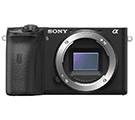
|

|

|
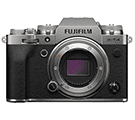
|

|

|
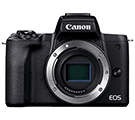
|

|

|
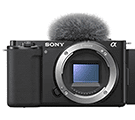
|
||
|
BUY
|
|||||||||||
| Price (body only) | $1,000 | $780 | $1,700 | $1,450 | $1,300 | $1,000 | $600 | $1,500 | $1,000 | $800 | |
| Buy | Amazon | Amazon | Amazon | Amazon | Amazon | Amazon | Amazon | Amazon | Amazon | Amazon | |
|
OUR SURVEY
|
|||||||||||
| Number of respondents who bought this series (including older models) | 25 | 25 | 18 | 18 | 10 | 9 | 4 | 3 | 3 | 1 | |
|
These ratings are based on the evaluation at the time of the camera’s release. For older devices, the score may be slightly inflated due to the technological advancements of competing devices. Average rating from 13 specialised websites (out of 10) See all ratings |
|||||||||||
| Release Year | 2019 | 2019 | 2022 | 2020 | 2021 | 2020 | 2020 | 2022 | 2022 | 2021 | |
|
SENSOR
|
|||||||||||
| Sensor size (mm) | 23.5 x 15.6 mm | 23.5 x 15.6 mm | 23.5 x 15.6 mm | 23.5 x 15.6 mm | 23.5 x 15.6 mm | 23.5 x 15.6 mm | 22.3 x 14.9 mm | 22.3 x 14.9 mm | 22.3 x 14.9 mm | 23.5 x 15.6 mm | |
| Number of megapixels | 24 Mpx | 24 Mpx | 40.2 Mpx | 26.1 Mpx | 26.1 Mpx | 26.1 Mpx | 24.2 Mpx | 32.5 Mpx | 24 Mpx | 24.2 Mpx | |
| Sensitivity : native ISO range | 100 – 32,000 | 100 – 32,000 | 125 – 12,800 | 160 – 12,800 | 160 – 12,800 | 160 – 12,800 | 100 – 25,600 | 100 – 32,000 | 100 – 32,000 | 100 – 32,000 | |
| Sensitivity : extended ISO range | 100 – 102,400 | 100 – 102,400 | 64 – 51,200 | 80 – 51,200 | 80 – 51,200 | 80 – 51,200 | 100 – 51,200 | 100 – 51,200 | 100 – 51,200 | 100 – 51,200 | |
|
AUTOFOCUS
|
|||||||||||
| Contrast detection | |||||||||||
| Phase detection | |||||||||||
| Number of focus points | 425 | 425 | 425 | 425 | 425 | 425 | 143 | 651 | 651 | 425 | |
|
SHUTTER SPEED
|
|||||||||||
| Mechanical shutter speed | 1/4,000 – 30 s | 1/4,000 – 30 s | 1/8,000 – 15 s | 1/8,000- 30 s | 1/4,000 – 900 s | 1/4,000 – 900 s | 1/4,000- 30 s | 1/8,000- 30 s | 1/4,000- 30 s | 1/4,000 – 30 s | |
| Maximum mechanical burst speed at full resolution | 11 fps | 11 fps | 15 fps | 15 fps | 8 fps | 8 fps | 10 fps | 15 fps | 15 fps | 11 fps | |
|
VIDEO
|
|||||||||||
| Video size | 4K | 4K | 6,2K | 4K | 4K | 4K | 4K | 4K | 4K | 4K | |
| Video: maximum size (pixels) and frame rate (fps) |
3,840×2160 / 30 fps 1,920×1,080 / 100 fps |
3,840×2,160 / 30 fps 1,920×1,080 / 120 fps |
6,240×4,160 / 30 fps 4,096×2,160 / 60 fps |
4,096×2,160 / 60 fps | 4,096×2,160 / 30 fps | 4,096×2,160 / 30 fps |
3,840×2,160 / 24 fps 1,920×1,080 / 60 fps 1,280×720 / 120 fps |
3,840×2,160 / 60 fps 1,920×1,080 / 120 fps |
3,840×2,160 / 30 fps 1,920×1,080 / 120 fps |
3,840×2,160 / 30 fps 1,920×1,080 / 120 fps |
|
|
VIEWFINDER
|
|||||||||||
| Type | Electronic | Electronic | Electronic | Electronic | Electronic | Electronic | Electronic | Electronic | Electronic | ||
| Number of dots | 2,360,000 | 2,360,000 | 3,690,000 | 3,690,000 | 2,360,000 | 2,360,000 | 2,360,000 | 3,690,000 | 3,690,000 | – | |
|
SCREEN
|
|||||||||||
| Size | 7.6 cm | 7.6 cm | 7.6 cm | 7.6 cm | 7.6 cm | 7.6 cm | 7.6 cm | 7.6 cm | 7.6 cm | 7.6 cm | |
| Number of dots | 921,600 | 921,600 | 1,840,000 | 1,620,000 | 1,620,000 | 1,040,000 | 1,040,000 | 1,620,000 | 1,040,000 | 921,600 | |
| Touch screen | |||||||||||
| Screen type | Tilting | Tilting | Tilting | Fully articulated | Tilting | Fully articulated | Fully articulated | Fully articulated | Fully articulated | Fully articulated | |
|
CONNECTIVITY
|
|||||||||||
| WiFi | |||||||||||
| NFC | |||||||||||
| Bluetooth | |||||||||||
| GPS | |||||||||||
| Microphone input | |||||||||||
| USB | USB 2.0 (480 Mbit/sec) | USB 2.0 (480 Mbit/sec) | USB 3.2 Gen 2 (10 GBit/sec) | USB 3.2 Gen 1 (5 GBit/sec) | USB 3.2 Gen 1 (5 GBit/sec) | USB 3.2 Gen 1 (5 GBit/sec) | USB 2.0 (480 Mbit/sec) | USB 3.2 Gen 2 (10 GBit/sec) | USB 2.0 (480 Mbit/sec) | USB 3.2 Gen 1 (5 GBit/sec) | |
|
STABILISATION
|
|||||||||||
| Sensor stabilisation | |||||||||||
| Stabilisation rating (CIPA) | 5 stops | – | 7 stops | 6.5 stops | – | 6 stops | – | 6 stops | – | – | |
|
OTHER SPECIFICATIONS
|
|||||||||||
| Built-in flash | |||||||||||
| Battery life (CIPA) | 810 frames | 410 frames | 580 frames | 500 frames | 380 frames | 325 frames | 305 frames | 660 frames | 450 frames | 360 frames | |
|
PHYSICAL SPECS
|
|||||||||||
| Weight of the camera body with battery and memory card (CIPA) | 503 g | 403 g | 557 g | 607 g | 383 g | 465 g | 387 g | 612 g | 426 g | 343 g | |
| Body dimensions | 120x67x69 mm | 120x67x60 mm | 130x91x64 mm | 135x93x64 mm | 118x83x47 mm | 126x85x65 mm | 116x88x59 mm | 132x90x92 mm | 123x88x83 mm | 115x64x45 mm | |
| Weather sealing | |||||||||||
|
BUY
|
|||||||||||
| Buy | Amazon | Amazon | Amazon | Amazon | Amazon | Amazon | Amazon | Amazon | Amazon | Amazon | |
We compared the most used micro 4:3 mirrorless camera models by long term travelers. We also included some cameras that are too recent to be included in our survey but are among the best sellers
|
Panasonic Lumix GX9 |
Panasonic Lumix GX85 |
Olympus E-M10 Mark IV |
Panasonic Lumix G95 |
OM System OM-5 |
||||
|---|---|---|---|---|---|---|---|---|
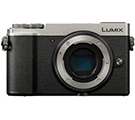
|
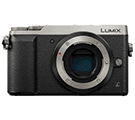
|
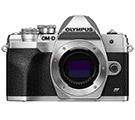
|
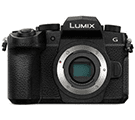
|
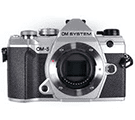
|
||||
|
BUY
|
||||||||
| Price (body only) | $800 | $600 | $800 | $650 | $1,000 | |||
| Buy | Amazon | Amazon | Amazon | Amazon | Amazon | |||
|
OUR SURVEY
|
||||||||
| Number of respondents who bought this series (including older models) | 21 | 21 | 15 | 8 | 5 | |||
|
These ratings are based on the evaluation at the time of the camera’s release. For older devices, the score may be slightly inflated due to the technological advancements of competing devices. Average rating from 13 specialised websites (out of 10) See all ratings |
||||||||
| Release Year | 2018 | 2016 | 2020 | 2019 | 2022 | |||
|
SENSOR
|
||||||||
| Sensor size (mm) | 17.3 x 13 mm | 17.3 x 13 mm | 17.4 x 13 mm | 17.4 x 13 mm | 17.4 x 13 mm | |||
| Number of megapixels | 20.3 Mpx | 16 Mpx | 20 Mpx | 20 Mpx | 20 Mpx | |||
| Sensitivity : native ISO range | 200 – 25,600 | 200 – 25,600 | 200 – 25,600 | 200 – 25,600 | 200 – 25,600 | |||
| Sensitivity : extended ISO range | 100 – 25,600 | 100 – 25,600 | 100 – 25,600 | 100 – 25,600 | 64 – 25,600 | |||
|
AUTOFOCUS
|
||||||||
| Contrast detection | ||||||||
| Phase detection | ||||||||
| Number of focus points | 49 | 49 | 121 | 49 | 121 | |||
|
SHUTTER SPEED
|
||||||||
| Mechanical shutter speed | 1/4,000 – 60 s | 1/4,000 – 60 s | 1/4,000 – 60 s | 1/4,000 – 60 s | 1/8,000 – 60 s | |||
| Maximum mechanical burst speed at full resolution | 9 fps | 8 fps | 8.7 fps | 9 fps | 10 fps | |||
|
VIDEO
|
||||||||
| Video size | 4K | 4K | 4K | 4K | 4K | |||
| Video: maximum size (pixels) and frame rate (fps) |
3,840×2,160 / 30 fps 1,920×1,080 / 60 fps |
3,840×2,160 / 30 fps 1,920×1,080 / 60 fps |
3,840×2,160 / 30 fps 1,920×1,080 / 60 fps |
3,840×2,160 / 30 fps 1,920×1,080 / 120 fps |
3,840×2,160 / 24 fps 1,920×1,080 / 120 fps |
|||
|
VIEWFINDER
|
||||||||
| Type | Electronic | Electronic | Electronic | Electronic | Electronic | |||
| Number of dots | 2,760,000 | 2,764,800 | 2,360,000 | 2,360,000 | 2,360,000 | |||
|
SCREEN
|
||||||||
| Size | 7.6 cm | 7.6 cm | 7.6 cm | 7.6 cm | 7.6 cm | |||
| Number of dots | 1,240,000 | 1,040,000 | 1,040,000 | 1,240,000 | 1,040,000 | |||
| Touch screen | ||||||||
| Tilting | ||||||||
| Fully articulated | ||||||||
|
CONNECTIVITY
|
||||||||
| WiFi | ||||||||
| NFC | ||||||||
| Bluetooth | ||||||||
| GPS | ||||||||
| Microphone input | ||||||||
| USB | USB 2.0 (480 Mbit/sec) | USB 2.0 (480 Mbit/sec) | USB 2.0 (480 Mbit/sec) | USB 2.0 (480 Mbit/sec) | USB 2.0 (480 Mbit/sec) | |||
|
STABILISATION
|
||||||||
| Sensor stabilisation | ||||||||
| Stabilisation rating (CIPA) | 4 stops | 4 stops | 4.5 stops | 5 stops | 7.5 stops | |||
|
OTHER SPECIFICATIONS
|
||||||||
| Built-in flash | ||||||||
| Battery life (CIPA) | 260 frames | 290 frames | 360 frames | 290 frames | 310 frames | |||
|
PHYSICAL SPECS
|
||||||||
| Weight of the camera body with battery and memory card (CIPA) | 450 g | 426 g | 383 g | 536 g | 414 g | |||
| Body dimensions | 124x72x47 mm | 122x71x44 mm | 122x84x49 mm | 130x94x77 mm | 125x85x50 mm | |||
| Weather sealing | ||||||||
|
BUY
|
||||||||
| Buy | Amazon | Amazon | Amazon | Amazon | Amazon | |||
We aggregated the ratings given to mirrorless cameras from 13 specialised websites. We converted them to a scale of 10 to calculate the average score. These ratings were given at the time of the camera’s release. For older cameras, the average score may be slightly inflated due to technological advancements.
| Buy | Price (body only) | Release date | Average rating | Versus | Photo-graphy Blog | Camera Race | Digital Camera World | Amateur Photo-grapher | Tech Radar | Les Numé-riques | PCMag | DP Review | Camera Jabber | UFC Que Choisir | Cnet | Camera Labs | |
|---|---|---|---|---|---|---|---|---|---|---|---|---|---|---|---|---|---|
| Fujifilm X-T4 | Amazon | $1,450 | 2020 | 8.4 | 10 | 6.5 | 10 | 10 | 10 | 8 | 10 | 9.2 | 10 | 8.4 | 9.1 | 8.2 | |
| Canon EOS R6 Mark II | Amazon | $2,500 | 2022 | 9.2 | 10 | 7.8 | 9 | 10 | 9 | 8 | 9 | 9.1 | 9 | – | – | 9 | |
| Sony Alpha 7 Mark IV | Amazon | $2,300 | 2021 | 8.9 | 9 | 7 | 9 | 10 | – | 10 | 9 | 8.9 | 10 | 8.1 | 9 | 9.2 | |
| Sony Alpha 7 Mark III | Amazon | $2,100 | 2018 | 8.5 | 10 | 7.2 | 9 | – | 10 | 8 | 10 | 8.9 | 9 | 8.2 | 9.2 | 9 | |
| Panasonic Lumix S5 Mark II | Amazon | $1,800 | 2023 | 7.9 | 10 | 6.9 | 10 | 9 | 10 | 10 | 7 | – | – | – | – | 9 | |
| Fujifilm X-T5 | Amazon | $1,700 | 2022 | 8.4 | 10 | 6.5 | 9 | 10 | 9 | 8 | 8 | 9 | 10 | – | – | 9.2 | |
| Canon EOS R7 | Amazon | $1,500 | 2022 | 8.3 | 9 | 6.6 | 10 | 9 | 9 | 8 | 9 | – | 9 | – | 8.4 | 8 | |
| Canon EOS R6 | Amazon | $2,000 | 2020 | 8.7 | 10 | 7 | 8 | 10 | 9 | 8 | 8 | 9 | 8 | 8 | 9.5 | 8 | |
| OM System OM-5 | Amazon | $1,000 | 2022 | 7.3 | 9 | – | 9 | 10 | 9 | – | 6 | 8.3 | – | – | – | – | |
| Nikon Z6 Mark II | Amazon | $1,850 | 2020 | 9 | 9 | 7 | 8 | 9 | 9 | 8 | 7 | 8.9 | 8 | 8.1 | 9 | – | |
| Panasonic Lumix S5 | Amazon | $1,800 | 2020 | 8.1 | 9 | 6.5 | 9 | 9 | 9 | 8 | 9 | 8.8 | 8 | 7.7 | 7.3 | 8 | |
| Canon EOS R8 | Amazon | $1,500 | 2023 | 7.9 | 9 | 6.8 | 9 | 9 | – | – | 8 | – | – | – | – | 8 | |
| Fujifilm X-S10 | Amazon | $1,000 | 2020 | 7.5 | 9 | 6.3 | 9 | 10 | 9 | 6 | 8 | 8.8 | 9 | 7.6 | 8.6 | – | |
| Fujifilm X-T30 Mark II | Fnac | $1,300 | 2021 | 7.5 | 9 | 6.1 | 8 | 10 | 9 | 6 | 8 | – | 9 | 7.6 | – | – | |
| Sony Alpha 6400 | Amazon | $780 | 2019 | 7.1 | 8 | 6.4 | 8 | 8 | 9 | 6 | 9 | 8.5 | 8 | 7.3 | 8.5 | 8 | |
| Canon EOS R10 | Amazon | $1,000 | 2022 | 6.5 | 9 | 6.2 | 9 | 8 | 9 | 6 | 8 | 8.7 | – | 7.7 | 7.8 | – | |
| Panasonic Lumix G95 | Amazon | $650 | 2019 | 5.8 | 9 | 5.5 | 9 | 9 | 8 | 6 | – | 8.3 | 10 | 7.4 | – | – | |
| Sony Alpha 6600 | Amazon | $1,000 | 2019 | 7.9 | 8 | 6.5 | 8 | 8 | 8 | 6 | 8 | 8.3 | 8 | 7.3 | – | 8 | |
| Panasonic Lumix GX85 | Amazon | $600 | 2016 | 5.8 | 10 | 5.3 | – | 9 | 8 | 4 | 8 | 8.2 | 8 | 7.3 | 8 | 10 | |
| Sony ZV-E10 | Amazon | $800 | 2021 | 6.4 | 9 | 6.4 | 8 | 8 | 9 | 6 | 7 | 8.2 | 8 | 7 | 8 | – | |
| Olympus OM-D E-M10 Mark IV | Amazon | $800 | 2020 | 5.7 | 9 | 5.4 | 10 | 9 | 8 | 6 | 7 | 8.1 | 8 | 6.5 | 8 | – | |
| Panasonic Lumix GX9 | Amazon | $800 | 2018 | 5.7 | 9 | 5.4 | 8 | 8 | 8 | 6 | – | 8.4 | 8 | 7.4 | – | 7 | |
| Canon M50 Mark II | Amazon | $600 | 2020 | 6.2 | 7 | 6 | 8 | 8 | 7 | 6 | 7 | 8 | 7 | 7.3 | – | 7.7 |
The sensor is one of the most important parts of a camera. It’s used to convert light rays into electrical signals. A large sensor makes it possible to have a shallow depth of field (which in turn makes it possible to have a subject in focus and a blurred background) and offers better rendering in low or contrasting light.
The number of megapixels isn’t a determining factor when choosing a camera. All cameras sold today have enough megapixels to make satisfactory enlargements. The higher the maximum ISO sensitivity, the more light the sensor can store and therefore take indoor photos without flash or photos of moving subjects.
If you’re buying your first mirrorless camera, there are kits that consist of a body and a lens. The focal length of the lens determines how much your subject will be magnified.
Its maximum aperture is stated like this: f/number(s). The smaller the f, the larger the aperture, allowing you to take photos in low light, without needing to increase the ISO sensitivity or use your flash.
The lenses that come in the kits are great for getting started, but as you get better, you’ll probably need to buy more. Lenses aren’t compatible from one brand to another. Therefore, remember to take the lens brand into account when buying your device. Sony is the brand that offers the most lenses for mirrorless cameras. Panasonic Lumix, Fujifilm and Olympus also have a pretty wide range. Canon, on the other hand, only recently arrived on the mirrorless market and doesn’t have many lenses for mirrorless cameras.
Mirrorless cameras are more compact and lighter than DSLRs. With the lens, they weigh between 14 oz and 2.2 lbs (400 g and 1 kg). The bigger your camera, the more it’ll weigh down your bag and attract unwanted attention, and the harder it’ll be to get out to capture scenes from everyday life.
Lots of mirrorless cameras now support 4K video (or UHD) which offers more detail, precision and clarity than shooting in Full HD. 4K also has the advantage of allowing you to crop. This is particularly useful for stabilising your image in the post-production editing process, since the software doesn’t need to insert pixels. But, be careful, as 4K requires a lot of storage space, as well as a high-performance computer if you plan on video editing.
The larger the rear screen and the number of megapixels, the easier it is to view photos and navigate. A rotatable screen also makes framing easier. A touch screen simplifies menu navigation and lets you scroll through photos, just like on a smartphone.
The higher the maximum shutter speed, the more blur-free photos you can take of moving subjects. Burst mode allows you to take several images in a row automatically. The higher the maximum burst speed, the more likely you are to get a good shot.
With optical stabilisation, it’s the lenses that move in the lens so that the image follows the movements of your camera. 5-axis stabilisation combines optical stabilisation with mechanical stabilisation in the sensor to compensate for the five different movements.
Mirrorless cameras’ battery life is usually shorter than that on DSLRs. It varies a lot from one model to another. You could carry an extra battery and a portable charger to avoid running out of power. But, that’ll increase the weight of your gear.
“Weather-sealed” devices have several rubber seals that prevent water and dust from getting inside. DSLR lenses, grips and flashes can also be weather-sealed. But this name is more of a marketing term than an actual standard. It covers different situations from one brand to another. So it’s actually quite hard to know exactly what one camera can endure.

